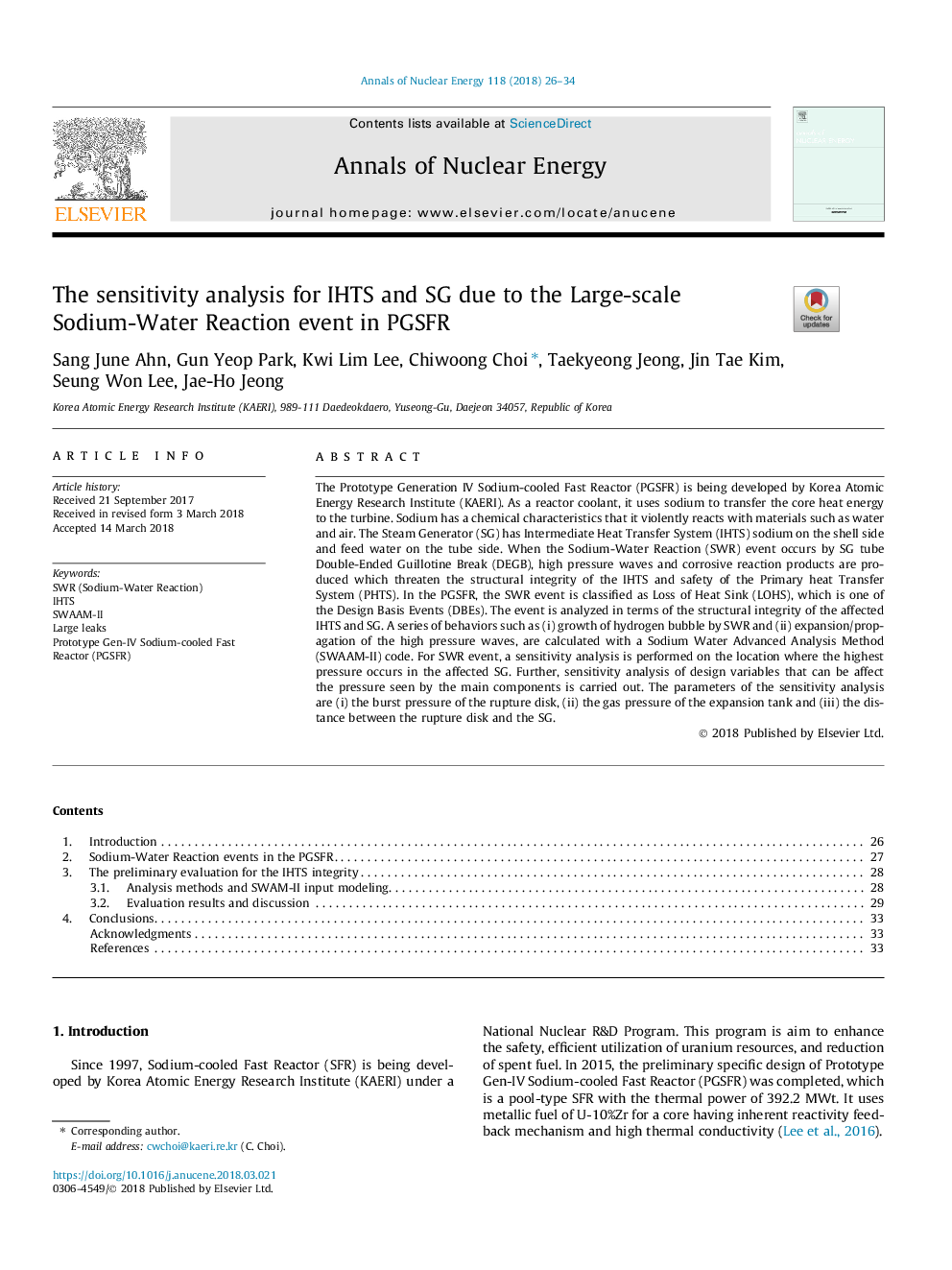| Article ID | Journal | Published Year | Pages | File Type |
|---|---|---|---|---|
| 8066943 | Annals of Nuclear Energy | 2018 | 9 Pages |
Abstract
The Prototype Generation IV Sodium-cooled Fast Reactor (PGSFR) is being developed by Korea Atomic Energy Research Institute (KAERI). As a reactor coolant, it uses sodium to transfer the core heat energy to the turbine. Sodium has a chemical characteristics that it violently reacts with materials such as water and air. The Steam Generator (SG) has Intermediate Heat Transfer System (IHTS) sodium on the shell side and feed water on the tube side. When the Sodium-Water Reaction (SWR) event occurs by SG tube Double-Ended Guillotine Break (DEGB), high pressure waves and corrosive reaction products are produced which threaten the structural integrity of the IHTS and safety of the Primary heat Transfer System (PHTS). In the PGSFR, the SWR event is classified as Loss of Heat Sink (LOHS), which is one of the Design Basis Events (DBEs). The event is analyzed in terms of the structural integrity of the affected IHTS and SG. A series of behaviors such as (i) growth of hydrogen bubble by SWR and (ii) expansion/propagation of the high pressure waves, are calculated with a Sodium Water Advanced Analysis Method (SWAAM-II) code. For SWR event, a sensitivity analysis is performed on the location where the highest pressure occurs in the affected SG. Further, sensitivity analysis of design variables that can be affect the pressure seen by the main components is carried out. The parameters of the sensitivity analysis are (i) the burst pressure of the rupture disk, (ii) the gas pressure of the expansion tank and (iii) the distance between the rupture disk and the SG.
Related Topics
Physical Sciences and Engineering
Energy
Energy Engineering and Power Technology
Authors
Sang June Ahn, Gun Yeop Park, Kwi Lim Lee, Chiwoong Choi, Taekyeong Jeong, Jin Tae Kim, Seung Won Lee, Jae-Ho Jeong,
